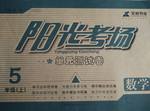
【题目】 When you write a text message or an email, you might put a smiling face or other pictures at the end to make the message more fun. These pictures are emojis. The first emojis were on Japanese mobile phones in the 1990s. Later, they were used on Apple’s iPhone and Android phones. Now they are everywhere!
Before emojis, there were emoticons. The word is a mixture(混合) of emotion(感情) and icon(图标). Emoticons are made of the signs you can find on your keyboard, for example:-) for a smiley or @};---for a rose. The first use of :-)was in 1982 and it was called “joke marker”. Emoji is a Japanese word which means pictograph: e(picture) +moji (character). Emojis are real pictures, for example![]() ,or
,or![]() .There are 1851emojis that can be used on mobile phones and other devices. There are all kinds of emojis, from faces and weather to things in the kitchen and animal.
.There are 1851emojis that can be used on mobile phones and other devices. There are all kinds of emojis, from faces and weather to things in the kitchen and animal.
In England, we have a saying: A picture paints a thousand words. For many people, an emoji is like a punctuation mark(标点). It’s like the tone of voice when we speak on the phone, or hand movements(gestures) used in conversation. Emojis are also changing the way we write. The more we use emojis, the less we use slang(俚语), such as LOL or OMG.
When someone speaks and looks serious, we try to look serious, too, and when someone smiles, we smile as well. This is how we show empathy(同感) and make friends(and enemies!). But when we’re online, we can’t see the person’s face and there’s no emotion. The invention of emojis changed that! Scientists in Australia have discovered that when we look at a smiley face online, the same parts of the brain start working as when we look at a real smiley face. Our mood changes, and we try to change our face to match the emoji. This is something we learn as we get older. Our brains have developed this ability over the last two or three years. This means that emojis have created a new brain pattern(模式)in us!
【1】Where does the writer of this passage possibly come from?
A.AustraliaB.JapaneseC.AmericaD.Britain
【2】What is NOT true about Paragraph 3?
A.Some slang is used less often because of emojis.
B.We no more need words.
C.An Emoji adds emotions to our messages.
D.An Emoji makes people feel face to face.
【3】What is (= ̄ω ̄=) according to the passage?
A.an emojiB.a pictureC.an emoticonD.a sound
【4】What can we learn from the passage?
A.Emojis will make our words disappear.
B.Emojis have greatly influenced us in many ways.
C.We don’t need to speak to others or meet others any more.
D.Scientists are worried about this invention of emojis.
【答案】
【1】D
【2】B
【3】C
【4】B
【解析】
本文是一篇说明文。文章主要讲了表情符号的发展及影响。
【1】细节理解题。根据In England, we have a saying: A picture paints a thousand words.在英国,我们有一句谚语:一幅画能描绘千言万语可知作者来自英国,故选D。
【2】推理判断题。通过文字“The more we use emojis, the less we use slang(俚语), ”判断A正确。阅读最后一段可以知道表情符号为我们的信息增加了情感。判断C正确。从文中“Scientists in Australia have discovered that when…”判断表情符号可以让人感觉到面对面。所以D正确。根据In England, we have a saying: A picture paints a thousand words.可知在英国,我们有一 句谚语:一幅画能描绘千言万语,而不是我们不再需要话语,故选B。
【3】细节理解题。根据Before emojis, there were emoticons. The word is a mixture(混合) of emotion(感情) and icon (图标). Emoticons are made of the signs you can find on your keyboard可知emoticons是由键盘上的符号组成的,而Emojis are real pictures , emojis指的是真正的图片,故选C。
【4】细节理解题。根据This means that emojis have created a new brain pattern(模式)in us!可知这意味着表情符号在我们大脑中创造了一个新的模式! 即表情符号已经在许多方面影响了我们,故选B。


 期末复习检测系列答案
期末复习检测系列答案 超能学典单元期中期末专题冲刺100分系列答案
超能学典单元期中期末专题冲刺100分系列答案 黄冈360度定制密卷系列答案
黄冈360度定制密卷系列答案 阳光考场单元测试卷系列答案
阳光考场单元测试卷系列答案科目:初中英语 来源: 题型:
【题目】—Can you play ________ piano? —No, I can’t. But I can play ________ basketball.
A. the, the B.the, a
C. the, / D. a, the
查看答案和解析>>
科目:初中英语 来源: 题型:
【题目】If you are lost in the forest, what ____ you do?
A. would like B. like C. would D. can
查看答案和解析>>
科目:初中英语 来源: 题型:
【题目】【山东省德州市二O一五年初中学业水平考试英语试题】 You’d better wake up Tom at 6:30. ______ he will be late for the match.
A. if B. or C. and D. but
查看答案和解析>>
科目:初中英语 来源: 题型:
【题目】The girl ________ a new computer for herself next year.
A. buys B. is buying
C. bought D. is going to buy
查看答案和解析>>
科目:初中英语 来源: 题型:
【题目】 We like to believe that before we make a decision, most of the time, we take time to consider all the facts carefully. However, Experts believe that only 5% of our decisions are based on a rational (理性的)thought process. So, what influences our decision-making process?
We often leave decision-making to our instincts(本能).Scientists have found out that if we had the choice, we like to avoid pain rather than get something. In fact, we're twice as happy when we try to avoid a bad situation than when we experience a good one. This is why when companies send ads, they use phrases like "How to avoid...", "Don't miss out!", etc.
There are also physical reasons that affect our decision-making. Psychologist (心理学家)John Bargh carried on an experiment where people were asked what they thought of a fictional person, while holding a cold or a hot cup of coffee. Those holding the hot cup believed the person to be warmer and more sociable than those holding the cold cup. So, when temperatures rise, the more likely we are to believe in strangers.
Stress is another thing which affects our decisions. Different situations are more or less stressful for different people. Researchers have found, though, that women are more conservative (保守的)about decisions when stressed, while men are to make riskier choices.
It may come as a surprise but every day from the minute we get up, we have to make countless decisions, like what to wear, what coffee to have and so on. Each choice makes our brain a little bit more tired, and this affects our decision-making. That's why important people, like presidents wearing the same three suits all the time, want to limit the small choices and spend more brain power (力量)on the bigger ones.
【1】Which of the following shows the structure of the passage?
A. B.
B. C.
C. D.
D.
【2】What is the main idea of the last paragraph?
A.Every day we have to make lots of big decisions.
B.People sometimes judge a person by what he wears.
C.What people wear influences their decision making.
D.Making fewer decisions helps to save brain power.
【3】What can we learn from the passage?
A.We make most of the decisions after our careful thinking.
B.People are likely to be happier to avoid something bad.
C.As the temperature is low, we are likely to believe others
D.People usually have risky decisions under heavy pressure.
【4】The purpose of the passage is to__________.
A.tell us what influences decision-makingB.advise people to make rational decisions
C.warn people not to make risky decisionsD.show disadvantages of rational decisions
查看答案和解析>>
科目:初中英语 来源: 题型:
【题目】Welcome to the Art Museum!
You’ve just stepped into one of the world's greatest collections of art, covering centuries of human creativity from around the world. With thousands of works on Show, You may wonder how to start your visit, but we are here to help. On the back of this Visitor Guide, you’ll find directions to some must see works in our collection—the “don't miss” list for the Art Museum. It's a great choice to start if you are new to the museum.
The following pages include a clear floor plan of the museum and its collections. But because we have several buildings, the overlook(鸟瞰图) below might be helpful. Enjoy your visit and feel free to ask for help and directions at any point during your stay.

【1】The passage is a page from________.
A.a tour map.B.a newspaper.
C.a visitor guide.D.a picture book.
【2】What can we see in the “don't miss” list for the Art Museum?
A.Some free paintings.B.Some must- see works.
C.Some new collections.D.Some museum buildings.
【3】How many parts does the overlook of the museum include?
A.TwoB.Three.
C.Four.D.Five
【4】Which part of the museum shows Chinese art?
A.The “Bridge”B.Rice Building.
C.The Modern Wing.D.Mckinlock Court
【5】Where can we see the special artworks?
A.On all floors of Rice Building.
B.On the second floor of Rice Building.
C.On the first floor of Michigan Avenue Building.
D.On the lower floor of Michigan Avenue Building.
查看答案和解析>>
科目:初中英语 来源: 题型:
【题目】【江西省2015年中等学校招生考试英语试题卷】There will be less pollution ___more people use public transportation .
A. but B. though C. unless D. if
查看答案和解析>>
科目:初中英语 来源: 题型:
【题目】______ is a girl. ______ name is Jenny.
A. He; His B. Her; She C. She; Her D. Her; He
查看答案和解析>>
湖北省互联网违法和不良信息举报平台 | 网上有害信息举报专区 | 电信诈骗举报专区 | 涉历史虚无主义有害信息举报专区 | 涉企侵权举报专区
违法和不良信息举报电话:027-86699610 举报邮箱:58377363@163.com